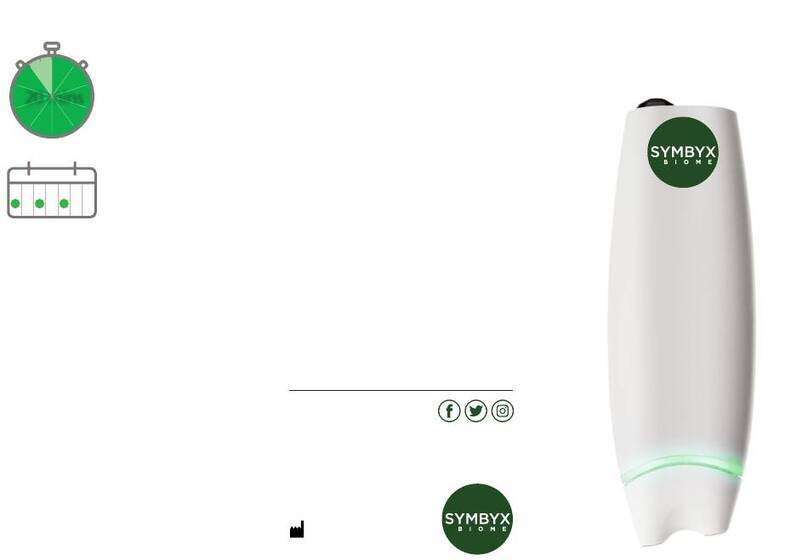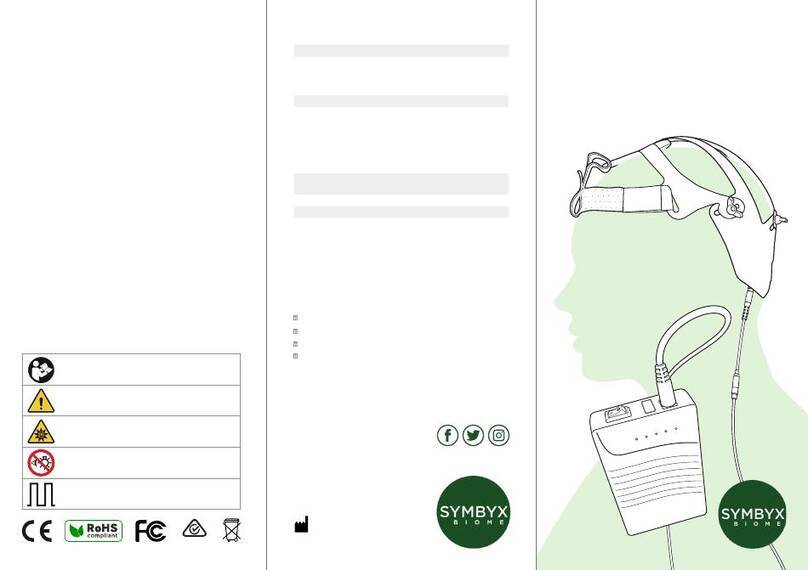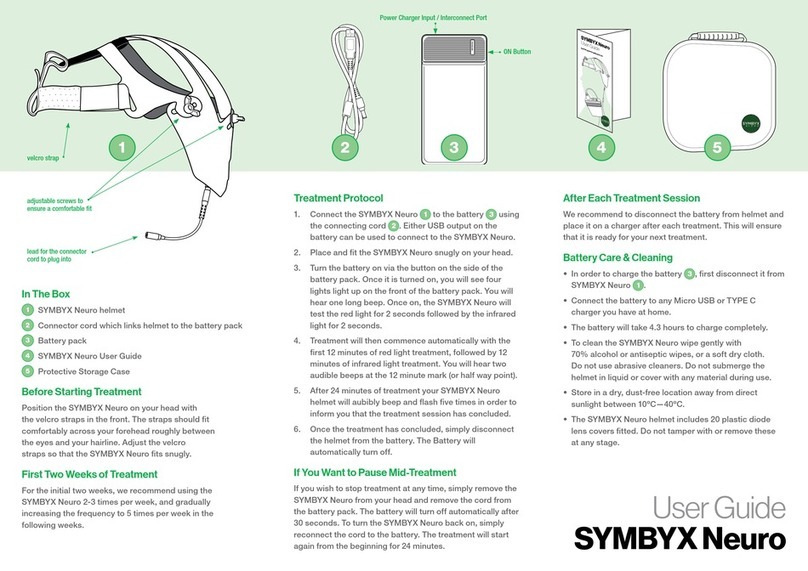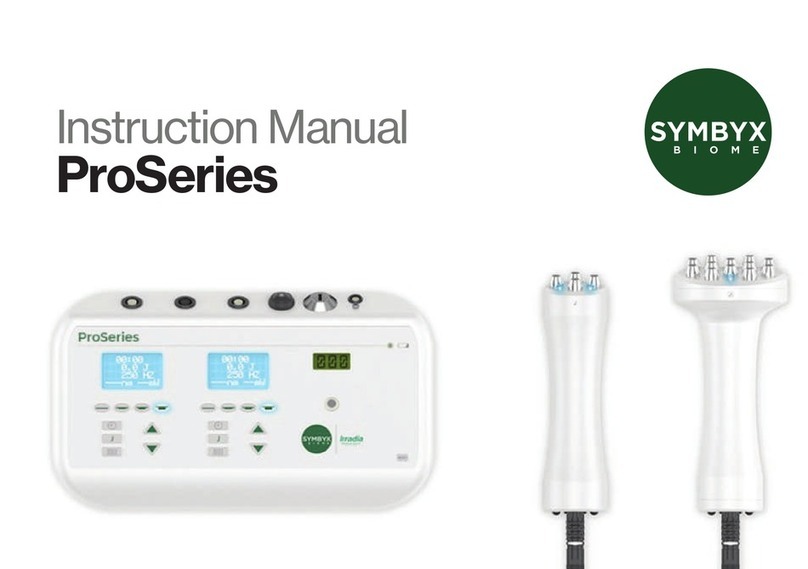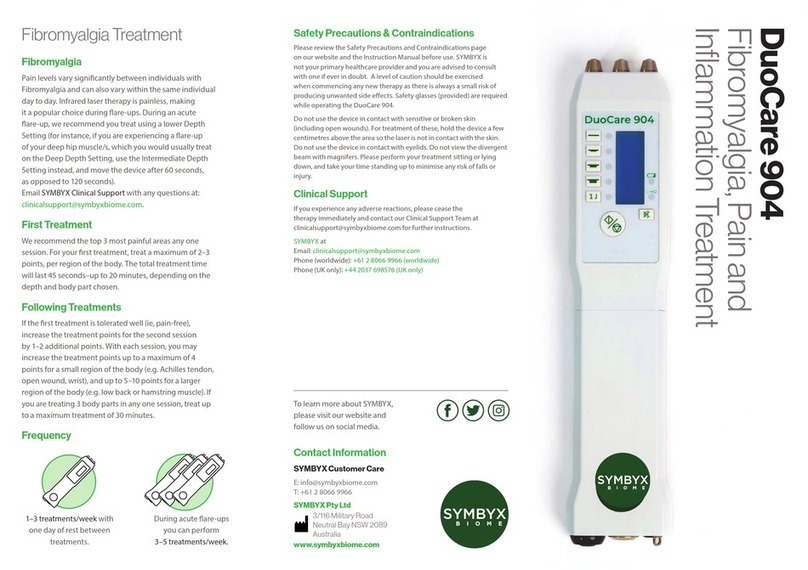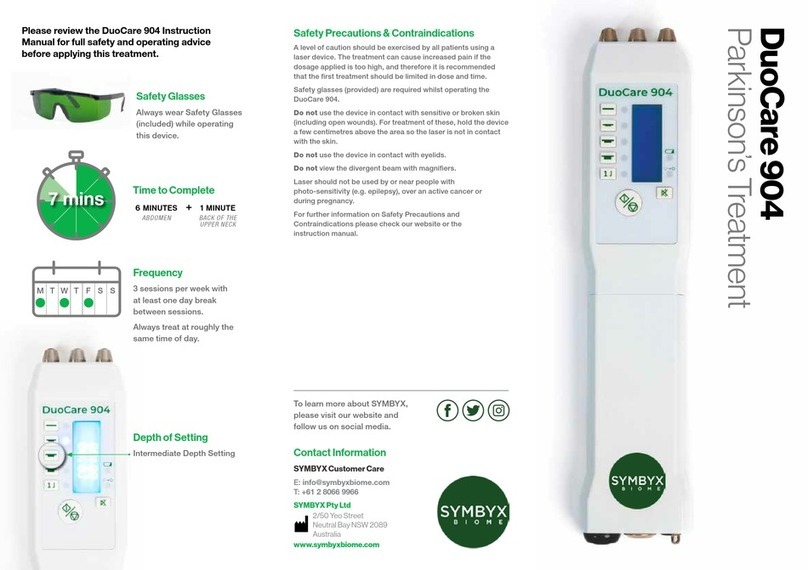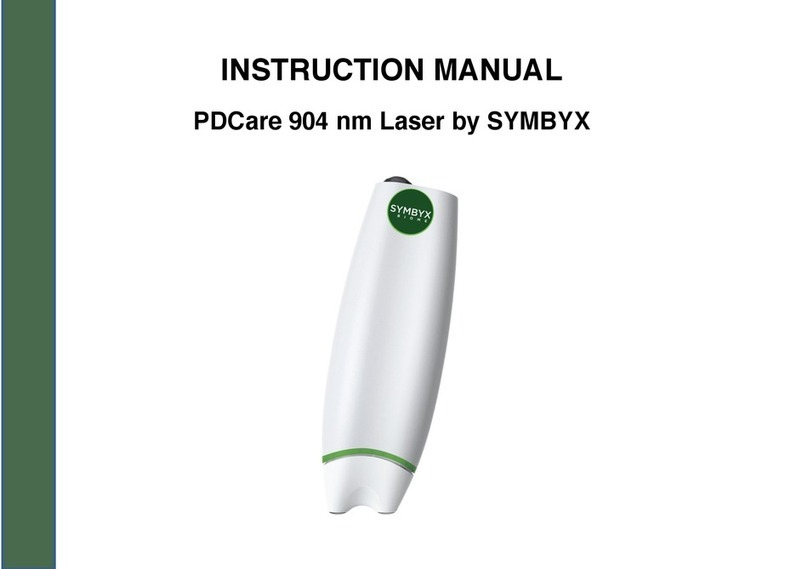2Device description and use
This device is a transportable, hand-held and battery-operated medical laser product, with which the operator administers non-invasive transient
class 3B infrared laser light to reduce pain and inflammation, as well as to promote tissue repair and recovery. This device is intended to be used
as a supplementary treatment modality intended to be operated by a variety of practitioners, e.g., doctors, nurses, veterinaries, dentists,
physiotherapists, dermatologists, chiropractors, and massage therapists. The treatment modality of medical laser devices is commonly called Low
Level Laser Therapy (LLLT), or laser therapy.
Laser is an acronym for Light Amplification by Stimulated Emission of Radiation and emits light with unique properties, which combined cannot be
found in any other light source. These properties can be described briefly as monochromatic, coherent and, generally, highly polarized. Light
consists of oscillating electric and magnetic waves, and our vision interprets colors on the basis of the wavelength content of the light as it enters
the pupil and hits the retina.
The wavelength is described as the distance between repeating units of these waves, and is measured in nanometers (nm). Light with
wavelengths shorter than about 400 nm (ultraviolet) and longer than 800 nm (infrared) are not perceived as visible to the human eye. Visible
light, when described in nm, are as follows: violet 420 nm, blue 470 nm, green 530 nm, yellow 580 nm, orange 610 nm, and red 700 nm. The light
intensity (output power) of lasers is measured in Watts (W). Laser light can be pulsed or continuous, and the beam can be focused, divergent or
collimated. A wide range of lasers are used in laser therapy, and the characteristics and parameters vary depending on their intended use.
2.1 Device design
Laser light applied to the skin or tissue may be absorbed, reflected, transmitted, or scattered. In order to perform the most efficient treatments,
the laser light has to be able to penetrate and reach the area intended to be treated. Superficially situated conditions, such as open wounds,
therefore require a lower dose, power and transmittance compared to those that are situated deep down within the tissue, for example in
muscles and joint disorders.
This device is designed to enable the operator to administer efficient and safe laser treatments with ease.
Generally recommended parameters, which are considered optimal for each treatment point on the basis of studies and clinical practice, have
been built into the design and the controls of the device. The parameters and the dosages are automatically set by the treatment controls. The
laser and the aperture design ensure practicable contact application and improved transmission of light through the tissue. Treatment intervals,
number of sessions, application specification and use are described in this manual. The device complies with regulatory requirements,
harmonized standards, and the medical device directive in order to ensure safe use and a high-quality standard. The device has been third party
tested (CB scheme) to ensure compliance with regulatory requirements.
